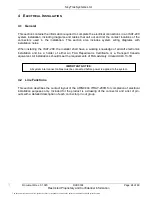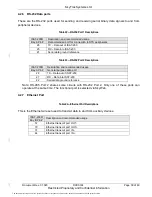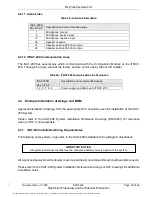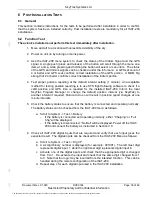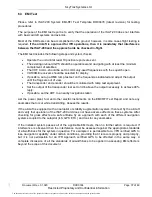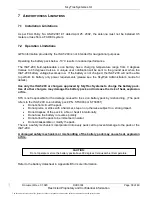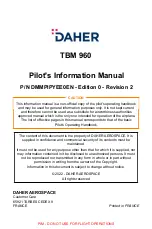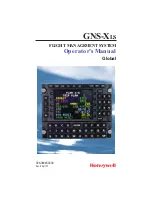
SkyTrac Systems Ltd.
Document Rev. 01.020
DOC0334
Page 37 of 49
Restricted Proprietary and Confidential Information
6.3 EMI Test
Please refer to ISAT-200 System EMI-RFI Test Template DOC0478 (latest revision) for testing
procedures.
The purpose of the EMI test report is to verify that the operation of the ISAT-200 does not interfere
with basic aircraft systems and avionics.
Most of the EMI tests can be accomplished on the ground; however, in some cases flight testing is
required.
If the aircraft is approved for IFR operations, then it is mandatory that interference
between the ISAT-200 and the approach aids be checked in-flight.
The EMI test includes the following steps and system checks:
Operate the unit until at least 10 position reports are sent.
The existing on-board GPS should be operational and navigating with at least the minimum
complement of satellites.
The VHF Comm. should be set to commonly-used frequencies with the squelch open.
VOR/DME receivers should be selected for display.
If possible, set up a DME ramp test set on the frequencies indicated and adjust the output
until the flags are out of view.
The transponder and encoder should be monitored with ramp test equipment.
Set the output of the transponder test set to 3 db above the output necessary to achieve 90%
reply.
If possible, set the ADF to a nearby navigation station
.
List the power plant, fuel and other electric instruments on the EMI/RFI Test Report and note any
anomalies that occur while transmitting. Assess the results.
If the aircraft is equipped with an autopilot or stability augmentation system, then test fly the aircraft
and verify that operation of the ISAT-200 unit does not have adverse effects on these systems. After
checking for gross effects at a safe altitude, fly an approach with each of the different navigation
systems coupled to the autopilot (ILS, GPS ETC.) and look for any anomalies.
If the installed system passes all of the applicable EMI tests, then no further action is required. If
interference is observed then the interference must be assessed against the appropriate standards
of airworthiness for the system in question. For example it is permissible for a VFR certified GPS to
lose navigation capability under certain conditions, providing that it recovers properly and promptly,
but it is not permissible for an IFR Approach certified GPS to be affected in the same way. A
complete discussion of all the standards of airworthiness to be applied in assessing EMI effects is
beyond the scope of this document.
The document reference is online, please check the correspondence between the online documentation and the printed version.


